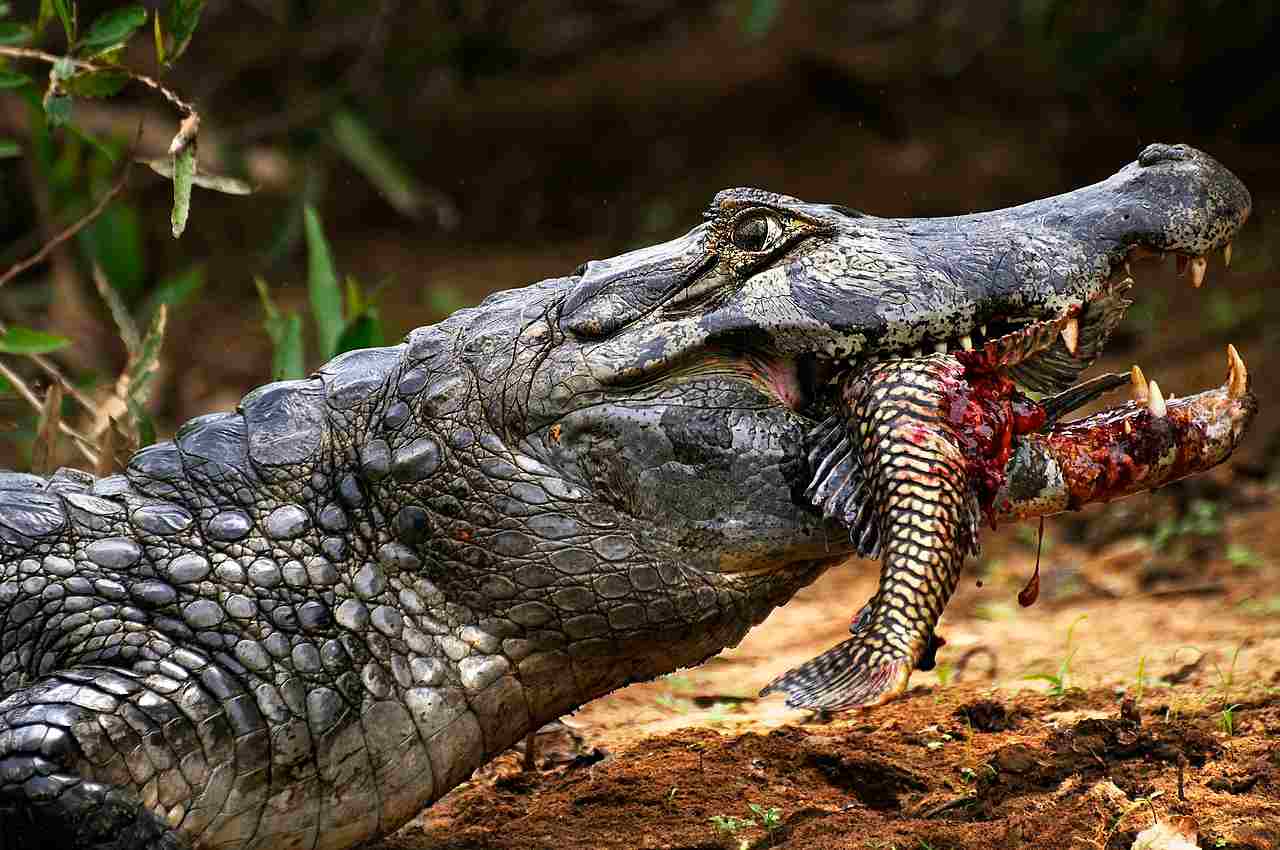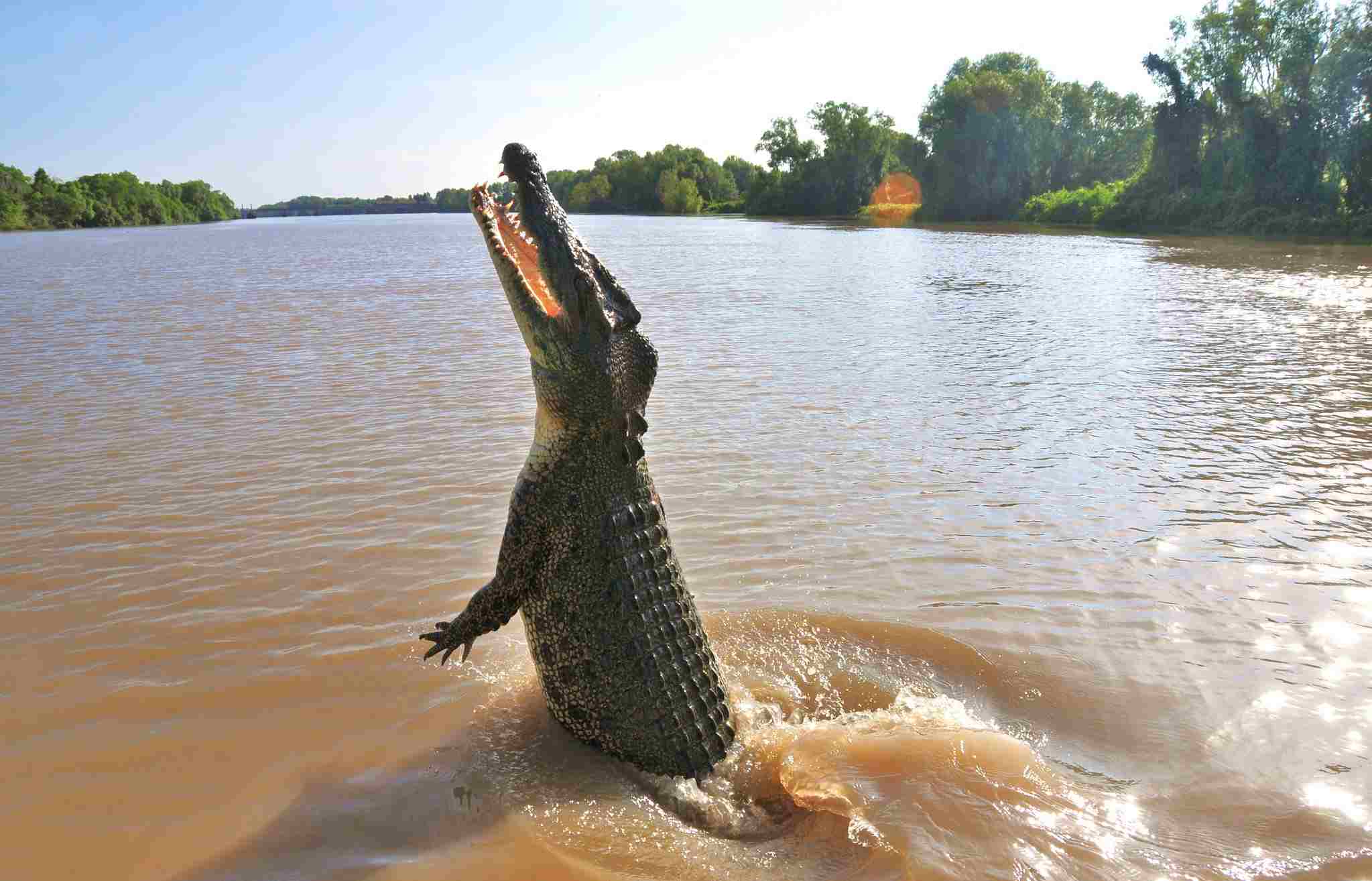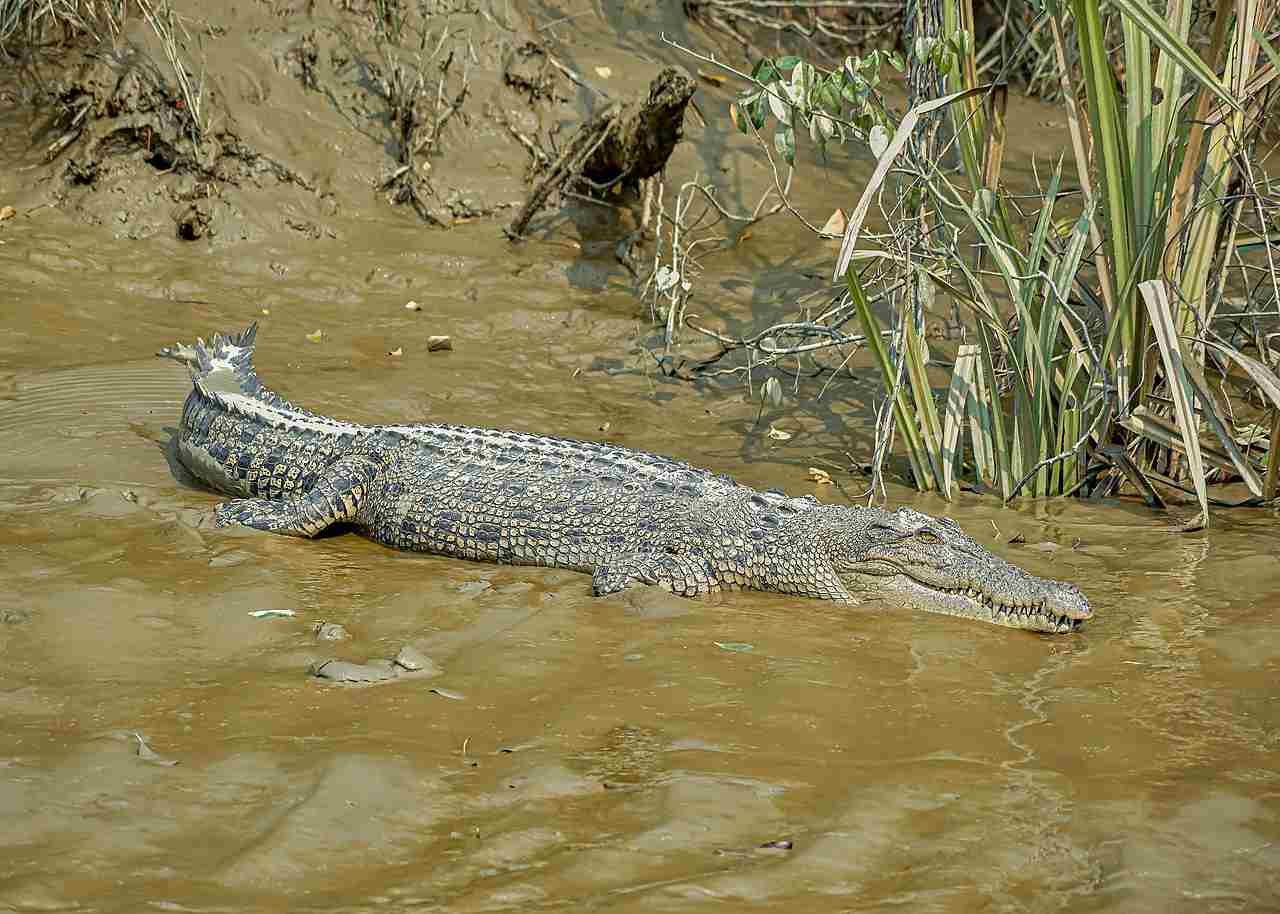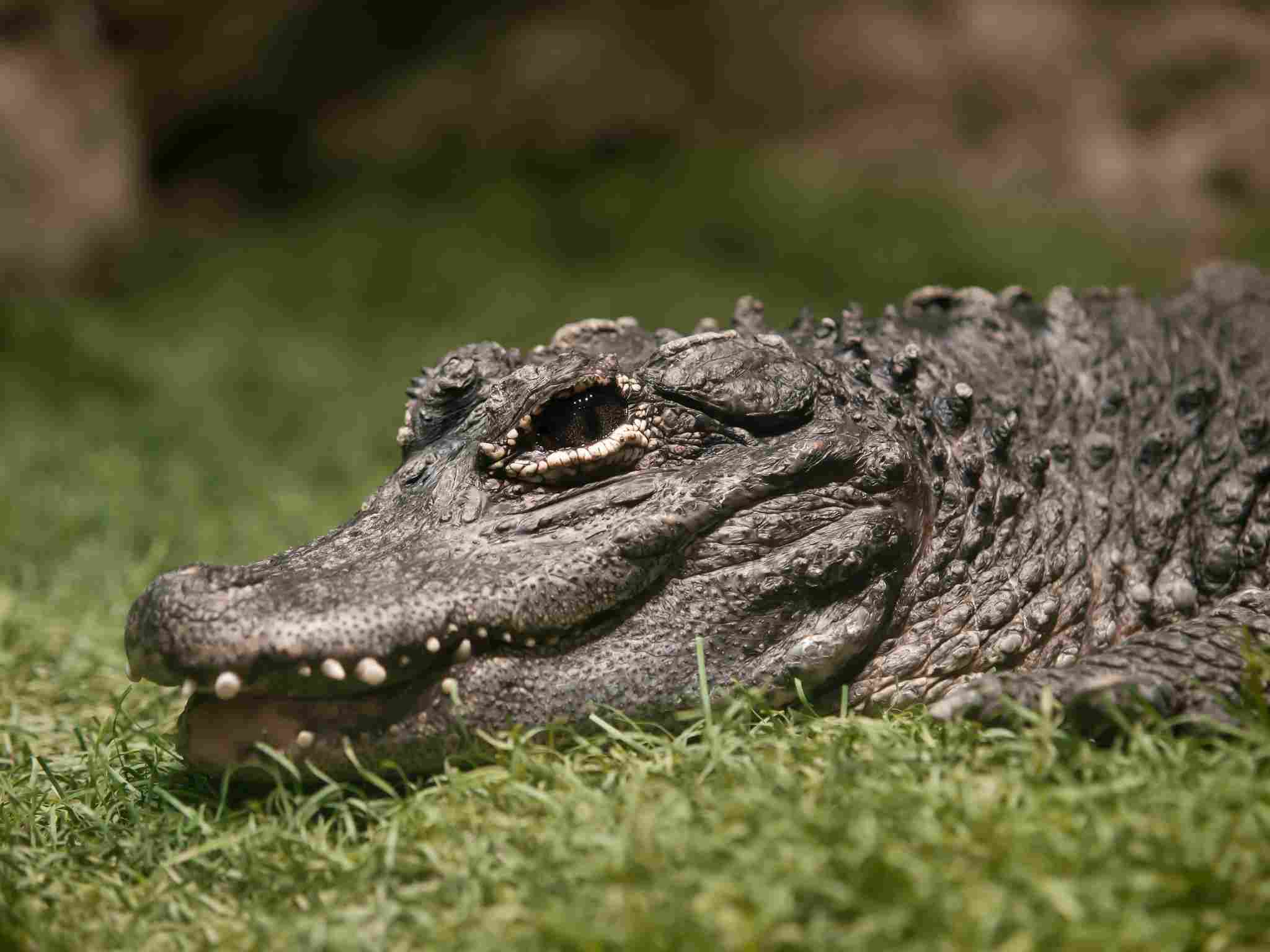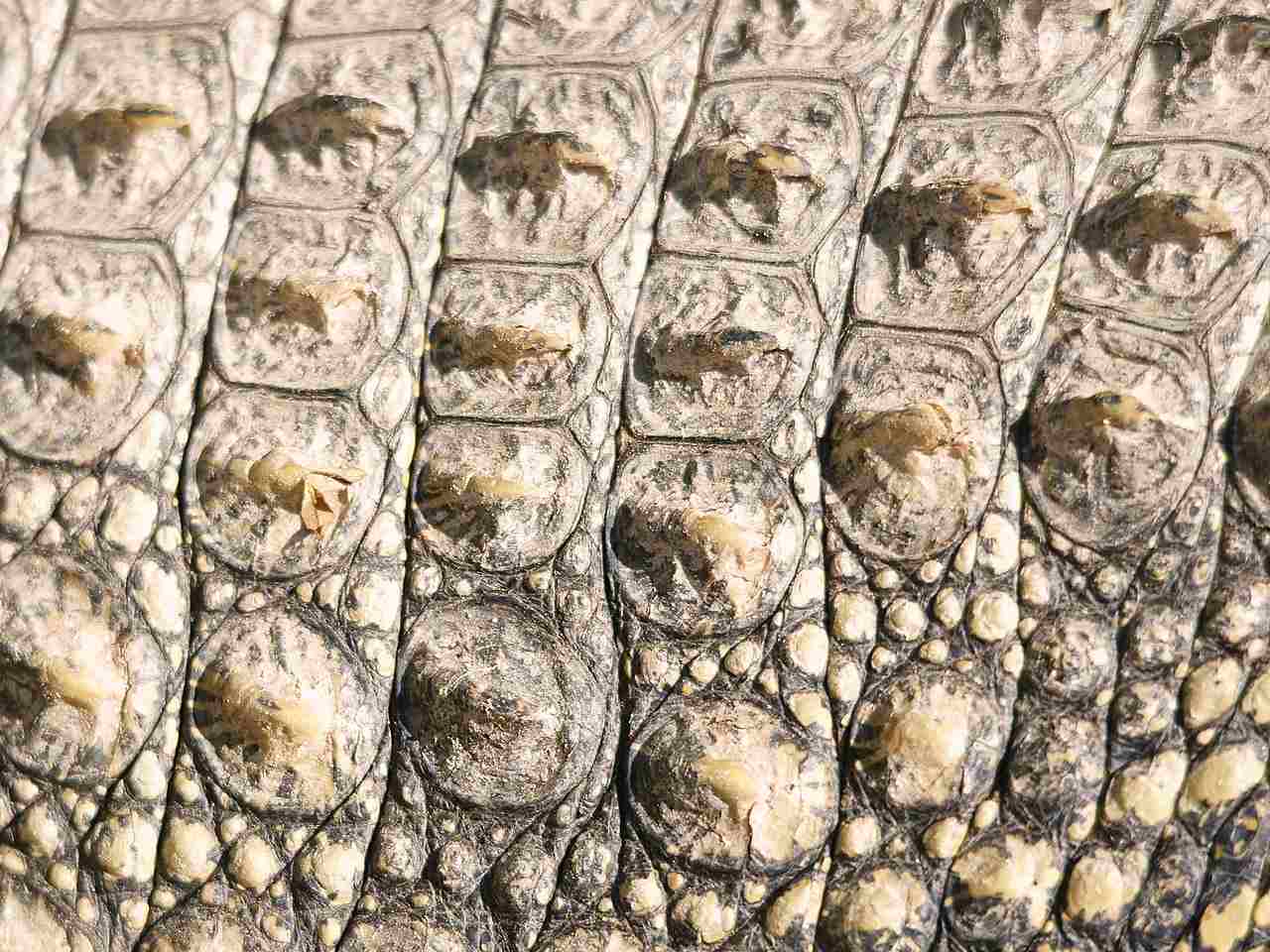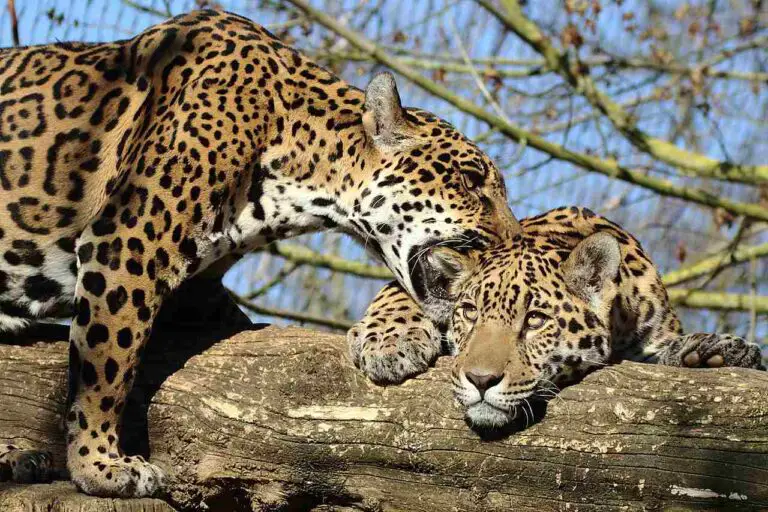Alligator Vs Crocodile – Who Would Win, Overall Comparison
In a face-off between an alligator and a crocodile, we explore their distinct characteristics, focusing on differences in color, snout shape, and preferred habitats. As members of the crocodilian family, these reptiles exhibit unique traits that set them apart. This analysis outlines these distinctions before delving into a confrontation, predicting the likely victor based on size, strength, and aggression.
Alligator vs Crocodile Fight Prediction: Assessing the Potential Outcome in a Confrontation
In a showdown between an alligator and a crocodile, the outcome hinges on their differences in size, anatomy, and behavior. While both share similarities as crocodilians, the crocodile’s larger size, greater weight, strength, and heightened aggression could potentially tip the scales in its favor in this battle.
I). Alligator’s Characteristics:
– Alligators are recognized by their broad, U-shaped snouts, darker coloration, and a preference for freshwater habitats like swamps and slow-moving rivers, setting them apart from crocodiles.
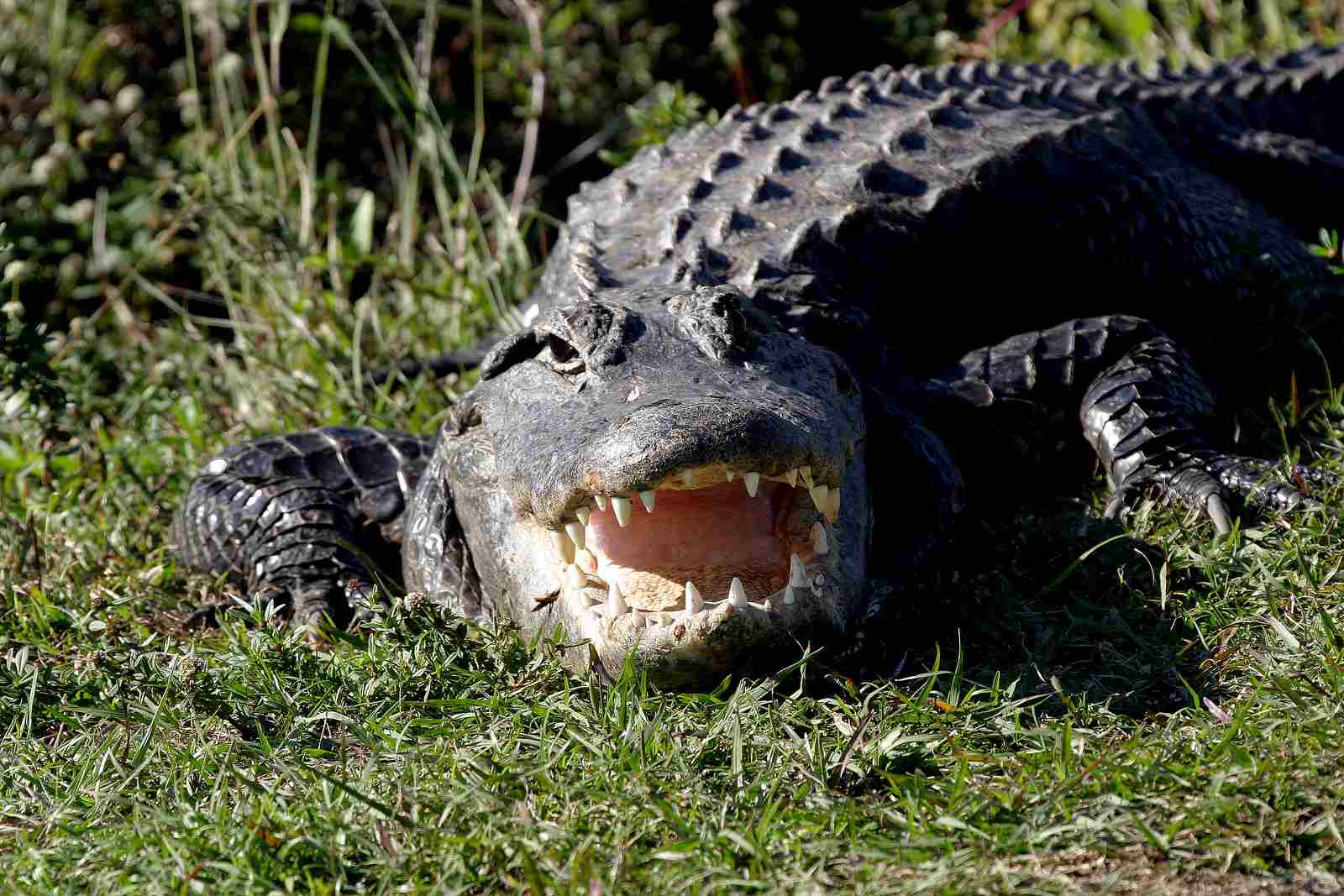
II). Crocodile’s Characteristics:
– Crocodiles typically sport V-shaped snouts, lighter coloration, and are adaptable to both freshwater and saltwater environments. Their habitat range includes rivers, lakes, estuaries, and coastal areas.
III). Size and Weight Disparities:
– Crocodiles, being generally larger and heavier than alligators, hold a significant advantage in physical confrontations, influencing the likely outcome of a fight.
IV). Strength and Aggression Levels:
– Crocodiles are often regarded as more aggressive and territorial than alligators. Their heightened aggression, combined with larger size and greater strength, gives crocodiles an edge in a one-on-one confrontation.
V). Alligator’s Adaptability and Defense:
– While alligators may showcase adaptability and a formidable defense, the larger, stronger, and more aggressive nature of crocodiles positions them as formidable opponents in a direct confrontation.
VI). Overall Dynamics:
– In this scenario, the crocodile is likely to emerge victorious in a fight against an alligator due to its larger size, greater weight, heightened aggression, and overall physical prowess. The alligator’s defense mechanisms may offer resilience, but the crocodile’s advantages play a decisive role in this encounter.
*Details of Comparison
| Criteria | Alligator | Crocodile |
| Taxonomy | Alligatoridae | Crocodylidae |
| Genus: Alligator |
Subfamilies: Crocodylinae, Alligatorinae, Gavialidae; Various Genera and Species
|
|
| Appearance | Broad, U-shaped snout |
Narrow, V-shaped snout; Lighter coloration; Leaner and more elongated body
|
| Skin | Smoother texture; Osteoderms embedded |
Rough texture; Pronounced osteoderms giving a bumpy appearance
|
| Snout | Broad, rounded snout |
Narrow, pointed snout
|
| Size | Generally smaller; Up to 15 feet |
Larger on average; Some species exceed 20 feet
|
| Weight | Adults 200 to 1,000 pounds |
Larger species over 2,000 pounds
|
| Bite Force (PSI) | 2,000 to 3,000 PSI |
Varies by species; Saltwater crocodile around 3,700 PSI
|
| Teeth | Straight and even |
Visible fourth tooth when the mouth is closed
|
| Offensive Advantages | Powerful bite, strong tail |
Higher bite force, agility, and speed
|
| Defensive Advantages | Stout build, powerful tail, retreats to water |
Agility, speed, territorial behavior
|
| Speed | 10-20 mph | 20-30 mph |
| Agility | Less agile on land |
More agile on land and in water
|
| Senses | Well-developed hearing, eyesight, and sense of smell |
Sensitive to water vibrations, excellent night vision, and sense of smell
|
| Overall Physical Capacity | Strong jaw muscles, ambush hunter |
Versatile physical abilities, effective in various hunting strategies
|
| Habitat Preference(s) | Freshwater habitats in the Americas |
Broader distribution, various aquatic environments globally
|
| Tracks | Claw marks and webbed imprints |
Claw marks with distinct, non-webbed imprints
|
| Lifespan | Up to 50-70 years |
Varies by species; Some can reach 70-100 years
|
| Mode of Feeding | Ambush predator |
Diverse feeding strategies including ambush, stalking, and cooperative hunting
|
| Intelligence | Considered less intelligent |
Generally recognized for higher cognitive abilities
|
| Social Behavior | Generally solitary |
Can exhibit more social behaviors, including group nesting
|
| Reproduction | Mound nests, temperature-dependent sex determination |
Various nesting methods, parental care, temperature-dependent sex determination
|
| Parental Behavior | Females guard the nest, no direct care after hatching |
Some species exhibit parental care, protecting nests and assisting hatchlings
|
| Proximity to Human-Inhabited Areas | More adaptable to living near humans |
Can inhabit areas near humans but may exhibit more aggressive behavior
|
| Behavior Toward Humans | Generally less aggressive unless provoked |
Some species can be more aggressive, especially if humans are perceived as a threat
|
| Danger Level | Generally poses less threat to humans |
Some species can be more dangerous due to size, aggression, and habitat overlap
|
| Precautions | Caution advised, incidents less frequent |
Heightened precautions necessary in areas with aggressive species
|
| Conservation Status | American alligator “Least Concern”; Chinese alligator “Critically Endangered” |
Varies by species; Some are “Least Concern,” while others are “Critically Endangered”
|
1. Taxonomy:
Alligator:
Family: Alligatoridae
Genus: Alligator
Species: Two extant species – A. mississippiensis (American alligator) and A. sinensis (Chinese alligator)
Crocodile:
Family: Crocodylidae
Subfamily: Various, including Crocodylinae (true crocodiles), Alligatorinae (alligators and caimans), and Gavialidae (gharials)
Genera and species vary among different crocodile species (e.g., Crocodylus niloticus – Nile crocodile, Crocodylus porosus – Saltwater crocodile)
2. Appearance:
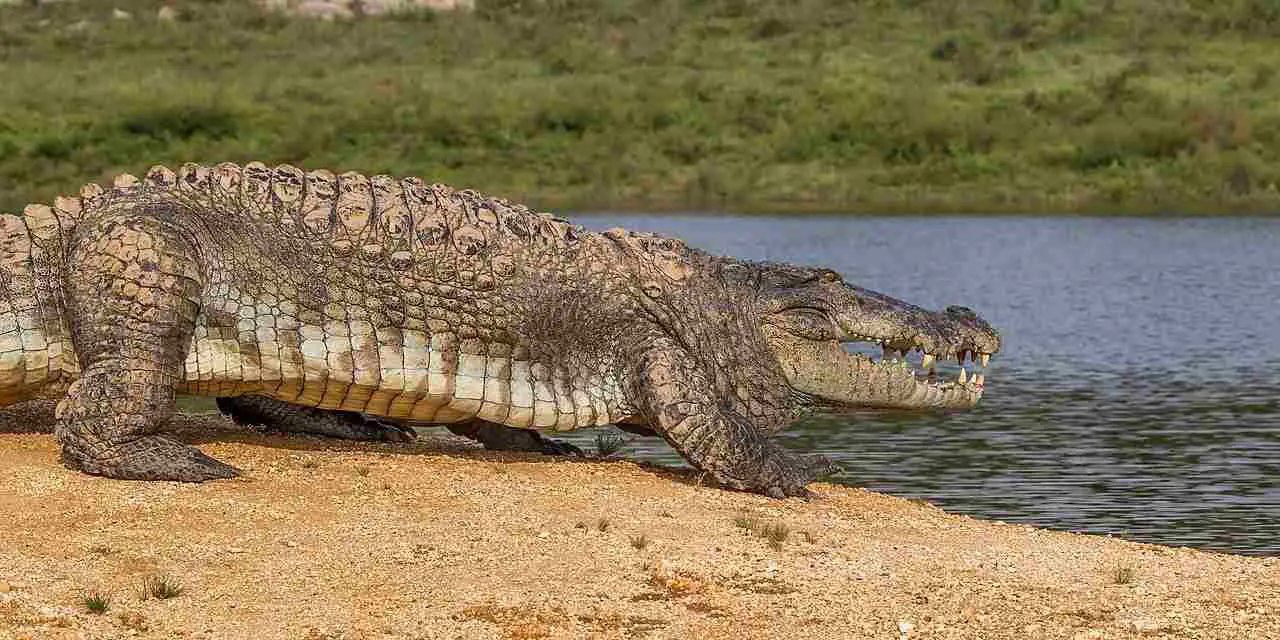
Alligator:
Broad, U-shaped snout
Dark coloration, often black or dark gray
Generally, a more robust and rounded appearance
Crocodile:
Narrow, V-shaped snout
Lighter coloration, ranging from olive to tan
Typically, a leaner and more elongated body
Comparison:
Alligators have a broader and more robust appearance, while crocodiles tend to be leaner and have a more elongated body.
Ecological Implications:
These physical differences contribute to their respective ecological roles and hunting strategies, with alligators adapted for strength and prey control, and crocodiles adapted for speed and a more versatile diet.
3. Alligator Vs Crocodile Skin:
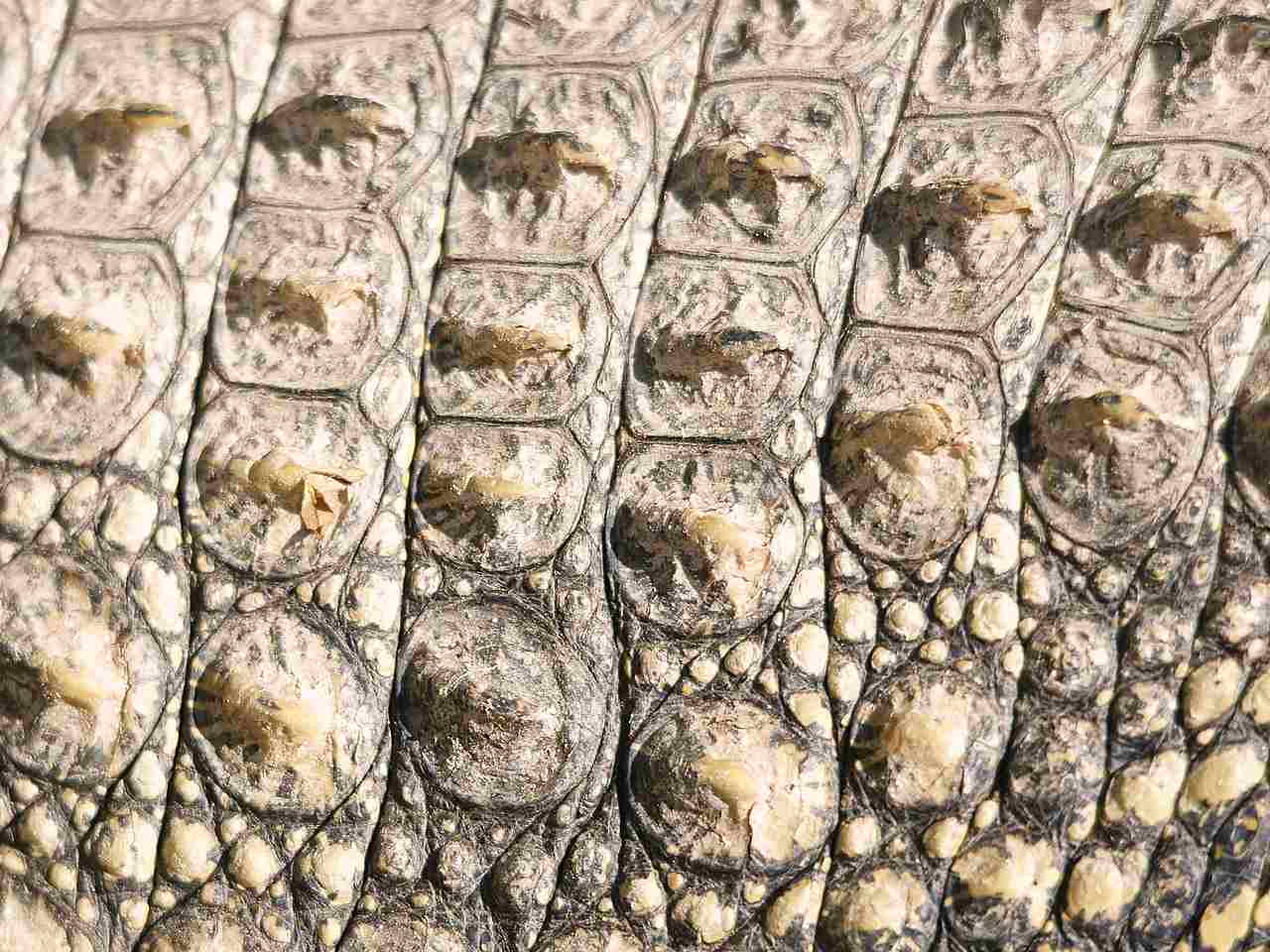
Alligator:
Skin is smoother and has a more uniform texture
Bony plates called osteoderms are embedded in the skin
Crocodile:
Skin is rougher and has a more irregular texture
Osteoderms are more pronounced, giving the skin a bumpy appearance
Comparison:
Alligator skin tends to be smoother and lacks the pronounced bumps seen in crocodile skin.
Ecological Implications:
Skin differences may affect their buoyancy, thermoregulation, and camouflage, influencing their behavior and habitat preferences.
4. Alligator Vs Crocodile Snout:
Alligator:
Broad, rounded snout
Designed for a powerful bite and crushing prey
Crocodile:
Narrow, pointed snout
Suited for quick strikes and a more varied diet
Comparison:
Alligators have a broader, more rounded snout, while crocodiles have a narrower, pointed snout.
Ecological Implications:
Snout differences align with their hunting techniques, with alligators specializing in capturing and holding onto prey, and crocodiles adapted for a broader range of hunting strategies.
5. Alligator Vs Crocodile Size:
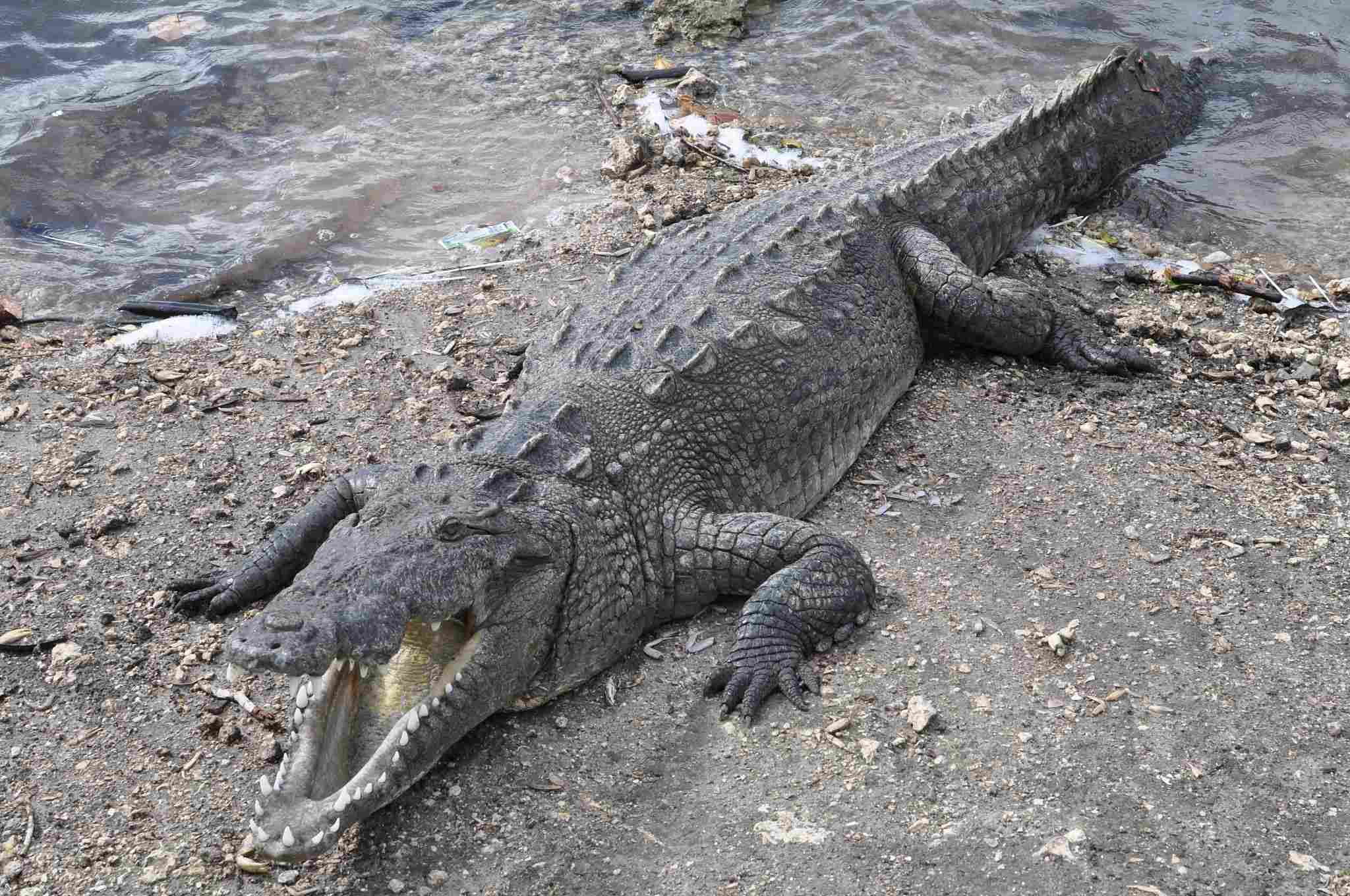
Alligator:
Generally smaller in size
Adult American alligators can reach lengths of 10-15 feet
Crocodile:
Tends to be larger on average
Species like the Saltwater crocodile can exceed 20 feet in length
Comparison:
Crocodiles, on average, tend to be larger than alligators.
Ecological Implications:
Size differences influence their position in the food chain, interaction with other species, and overall ecological impact within their habitats.
6. Weight:
Alligator:
Adults can weigh between 200 to 1,000 pounds
Crocodile:
Larger species can weigh over 2,000 pounds
Comparison:
Crocodiles generally have a higher weight range compared to alligators.
Ecological Implications:
Weight impacts factors like territorial behavior, resource competition, and the overall dynamics of their ecosystems.
7. Alligator Vs Crocodile Bite Force (PSI):
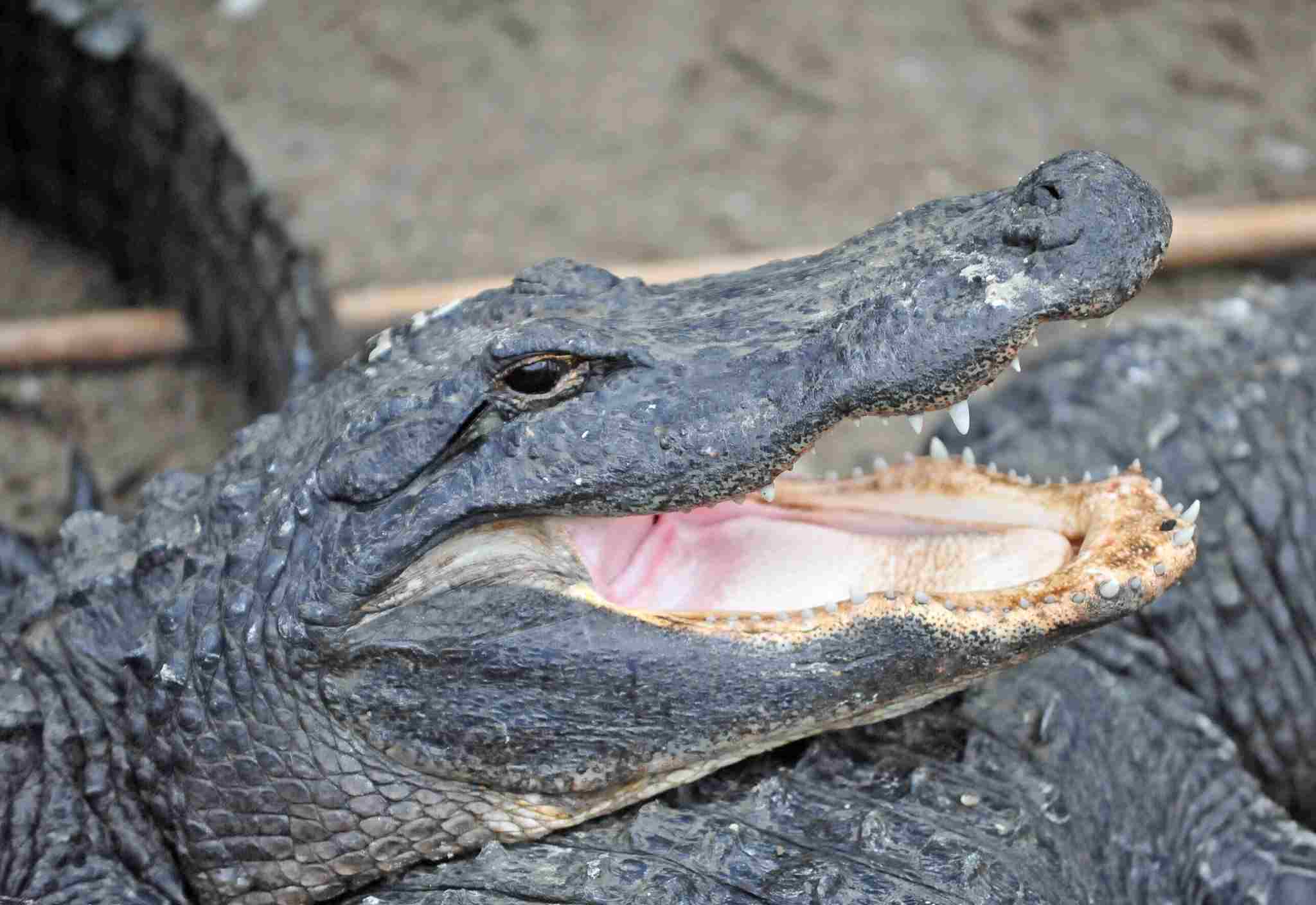
Alligator:
Bite force ranges around 2,000 to 3,000 PSI
Crocodile:
Bite force varies among species, with the Saltwater crocodile having one of the highest recorded at about 3,700 PSI
Comparison:
Crocodiles generally exhibit a higher bite force compared to alligators.
Ecological Implications:
Higher bite force in crocodiles is an adaptation for capturing and subduing a wider range of prey, including large and powerful animals.
8. Alligator Vs Crocodile Teeth:
Alligator:
Teeth are generally straight and even
Crocodile:
Fourth tooth on the lower jaw visible when the mouth is closed, giving a toothy grin appearance
Comparison:
Crocodiles often display a visible fourth tooth, while alligators have a more concealed tooth structure.
Ecological Implications:
Tooth structure contributes to their feeding habits, with crocodiles employing a “death roll” technique to tear apart prey.
9. Physical Offensive Advantages:
Alligator:
Powerful bite for crushing prey
Strong tail used for propulsion and defensive strikes
Crocodile:
Higher bite force for subduing larger prey
Agile and powerful in water, making them effective hunters
Comparison:
Crocodiles have a physical advantage in terms of higher bite force and agility, while alligators excel in crushing prey with a powerful bite.
Ecological Implications:
These advantages contribute to their ecological roles, with alligators being effective ambush predators and crocodiles exhibiting versatility in hunting strategies.
10. Physical Defensive Advantages:
Alligator:
Stout build and powerful tail for defensive strikes
Ability to retreat into water for safety
Crocodile:
Agility and speed for evasive maneuvers
Territorial behavior as a defensive strategy
Comparison:
Alligators rely on their robust build and retreat to water, while crocodiles use agility and territorial behavior for defense.
Ecological Implications:
These defensive adaptations impact their interactions with predators, competitors, and the overall balance of their ecosystems.
11. Speed (Km/hour or Mile/hour):
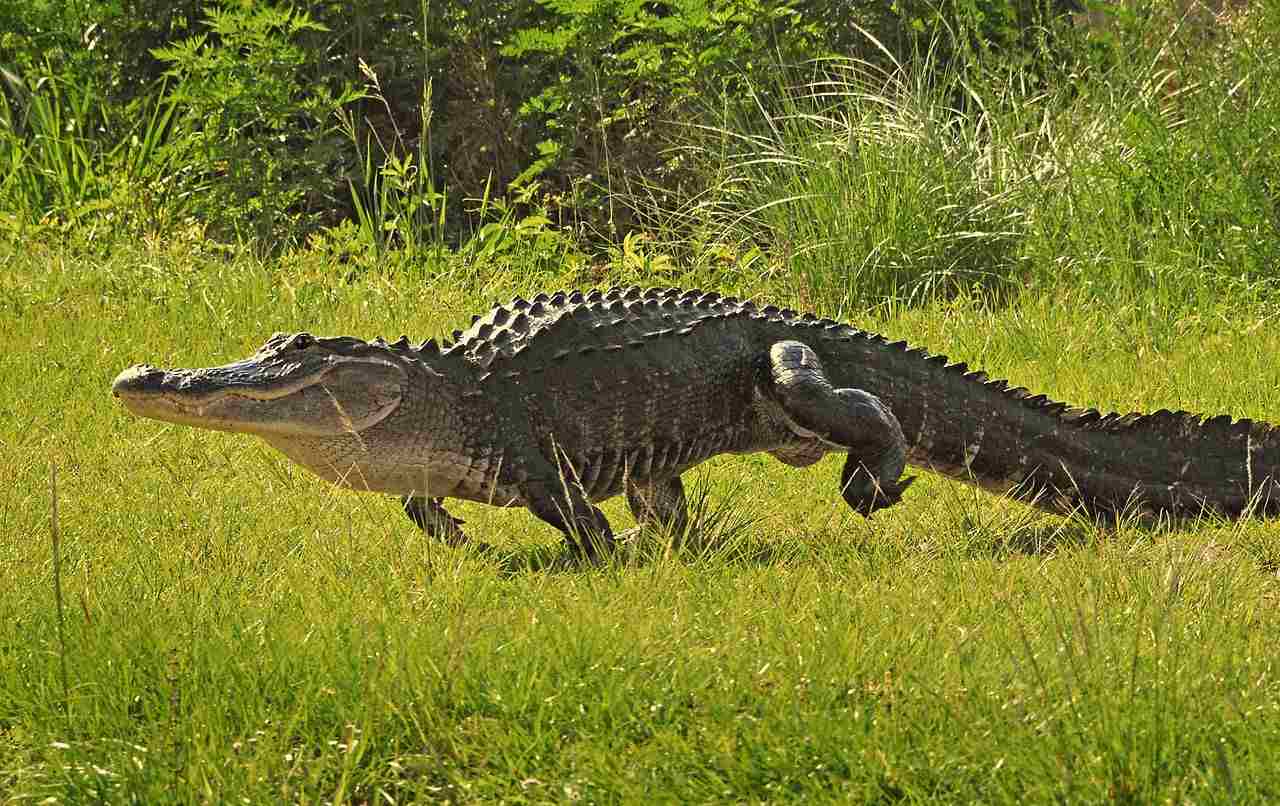
Alligator:
Can reach speeds of 10-20 mph (16-32 km/h) for short bursts
Crocodile:
Faster, with speeds ranging from 20-30 mph (32-48 km/h)
Comparison:
Crocodiles are generally faster swimmers compared to alligators.
Ecological Implications:
Speed influences their ability to hunt, evade predators, and navigate their habitats, shaping their ecological roles.
12. Agility:
Alligator:
Less agile on land, adapted for water movements
Crocodile:
More agile on both land and in water, capable of quick maneuvers
Comparison:
Crocodiles exhibit greater agility on both land and water compared to alligators.
Ecological Implications:
Agility affects their hunting techniques, territorial defense, and overall adaptability to different environmental conditions.
13. Senses:
Alligator:
Well-developed sense of hearing and eyesight
Keen sense of smell
Crocodile:
Highly sensitive to vibrations in water
Excellent night vision and sense of smell
Comparison:
Both alligators and crocodiles have well-developed senses, with some variations in emphasis on different senses.
Ecological Implications:
Enhanced senses contribute to their ability to locate prey, navigate their surroundings, and engage in social behaviors within their habitats.
14. Overall Physical Capacity:
Alligator:
Strong jaw muscles for crushing prey
Well-adapted for ambush hunting
Crocodile:
Versatile physical abilities, including powerful bite, agility, and speed
Effective in various hunting strategies
Comparison:
Crocodiles generally exhibit a more versatile set of physical capabilities compared to alligators.
Ecological Implications:
Physical capacity influences their roles in maintaining ecosystem balance, adapting to environmental changes, and interacting with other species.
15. Alligator Vs Crocodile Region/Habitat Preference(s):
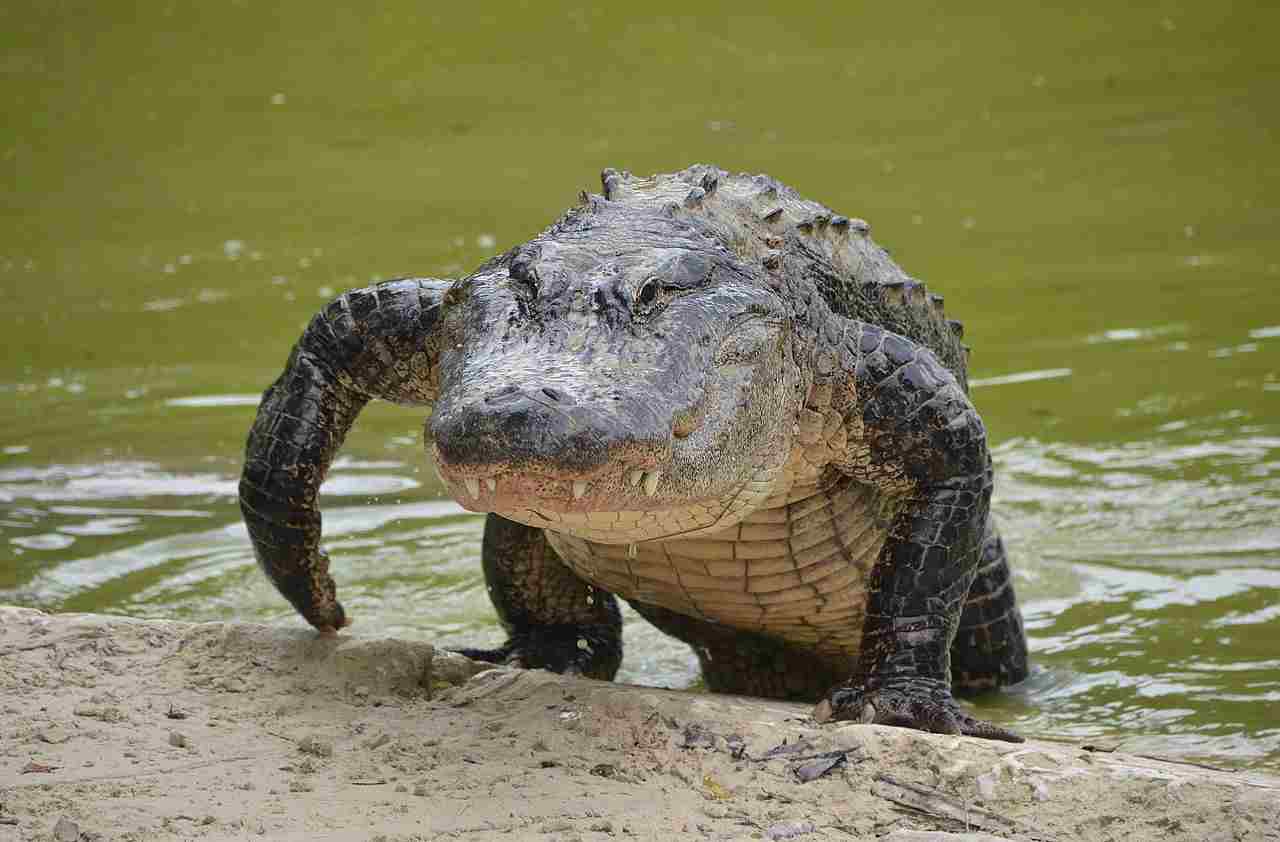
Alligator:
Found in freshwater habitats like swamps, rivers, and lakes in the Americas
Crocodile:
Found in a wider range of habitats including freshwater, brackish water, and coastal areas, distributed globally
Comparison:
Alligators are primarily found in freshwater habitats in the Americas, while crocodiles have a broader global distribution, inhabiting various aquatic environments.
Ecological Implications:
Habitat preferences influence their interactions with other species, resource competition, and the overall health of their respective ecosystems.
16. Tracks:
Alligator:
Typically, show claw marks and webbed imprints
Crocodile:
Often display claw marks, but with distinct, non-webbed imprints
Comparison:
While both leave claw marks, the track patterns differ, with alligators showing webbed imprints and crocodiles having distinct non-webbed marks.
Ecological Implications:
Track identification aids in wildlife monitoring, understanding population distribution, and studying their movement patterns within ecosystems.
17. Lifespan:
Alligator:
Can live up to 50-70 years in the wild
Crocodile:
Lifespan varies by species, with some reaching 70-100 years
Comparison:
Crocodiles, on average, tend to have a longer lifespan compared to alligators.
Ecological Implications:
Lifespan influences population dynamics, reproductive strategies, and the overall stability of their respective ecosystems.
18. Mode of Feeding:
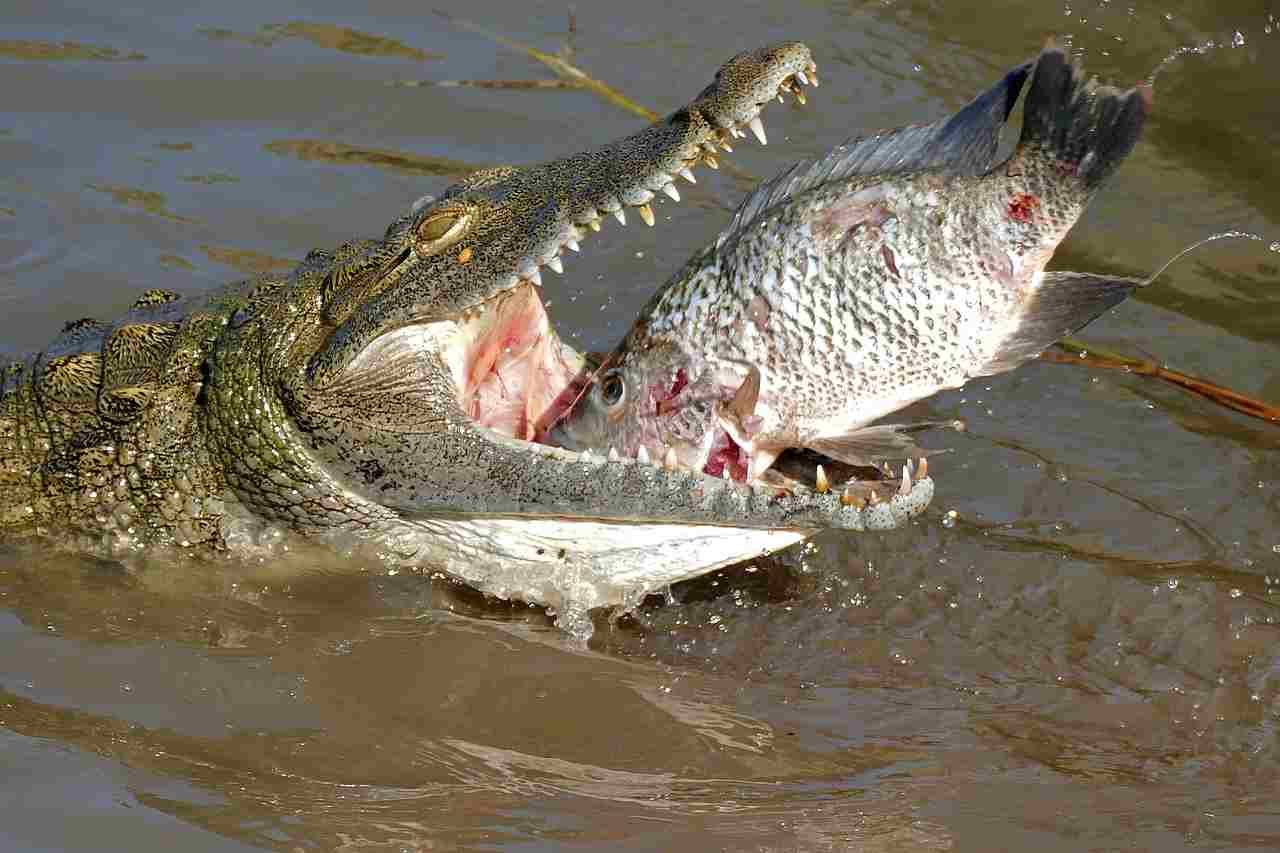
Alligator:
Primarily ambush predators, relying on powerful bites to subdue prey
Crocodile:
Exhibit a broader range of feeding strategies, including ambush hunting, stalking, and cooperative hunting
Comparison:
Alligators mainly use an ambush strategy, while crocodiles employ a more diverse set of feeding techniques.
Ecological Implications:
Feeding behaviors contribute to their ecological roles, impacting prey populations, and influencing the structure of their ecosystems.
19. Intelligence:
Alligator:
Considered less intelligent than crocodiles
Crocodile:
Generally recognized for higher cognitive abilities
Comparison:
Crocodiles are often considered more intelligent compared to alligators.
Ecological Implications:
Intelligence influences problem-solving, learning, and adaptability to environmental changes, impacting their survival and ecological interactions.
20. Social Behavior:
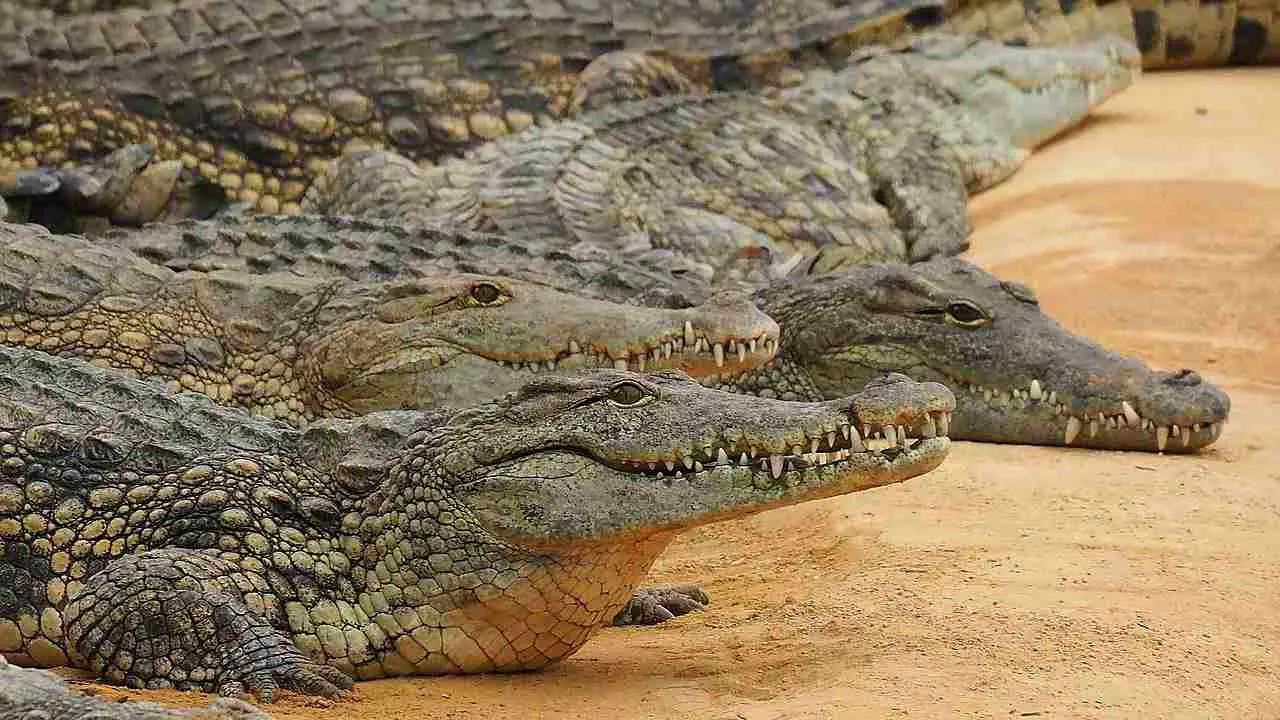
Alligator:
Generally solitary, with limited social interactions
Crocodile:
Can exhibit more social behaviors, including group nesting and cooperative hunting
Comparison:
Crocodiles tend to display more complex social behaviors compared to the more solitary nature of alligators.
Ecological Implications:
Social behaviors affect population dynamics, breeding success, and overall community structure within their habitats.
21. Mode of Reproduction:
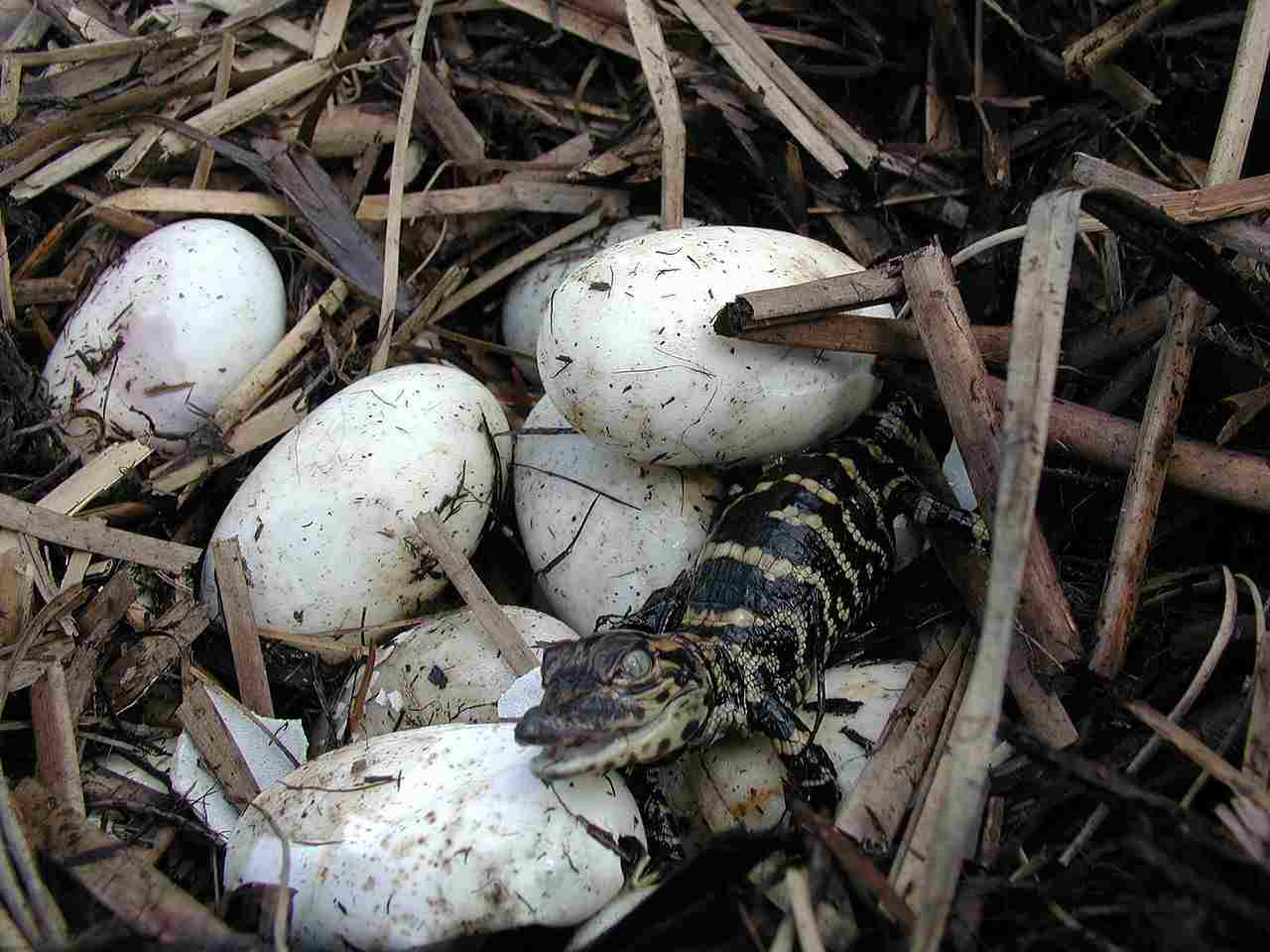
Alligator:
Build mound nests for eggs; temperature-dependent sex determination
Crocodile:
Utilize various nesting methods, including mound nests or holes in the ground; some species display parental care; temperature-dependent sex determination
Comparison:
Both alligators and crocodiles employ temperature-dependent sex determination in their reproductive strategies, but nesting methods and parental care may vary.
Ecological Implications:
Reproductive strategies impact population dynamics, genetic diversity, and the overall health of their populations within ecosystems.
22. Parental Behavior:
Alligator:
Females guard the nest but do not provide direct care after hatching
Crocodile:
Some species exhibit parental care, with females protecting nests and assisting hatchlings to water
Comparison:
Crocodiles are more likely to show parental care compared to alligators.
Ecological Implications:
Parental behavior influences the survival rates of offspring, affecting population dynamics and contributing to the overall health of the species within their ecosystems.
23. Proximity to Human-Inhabited Areas:
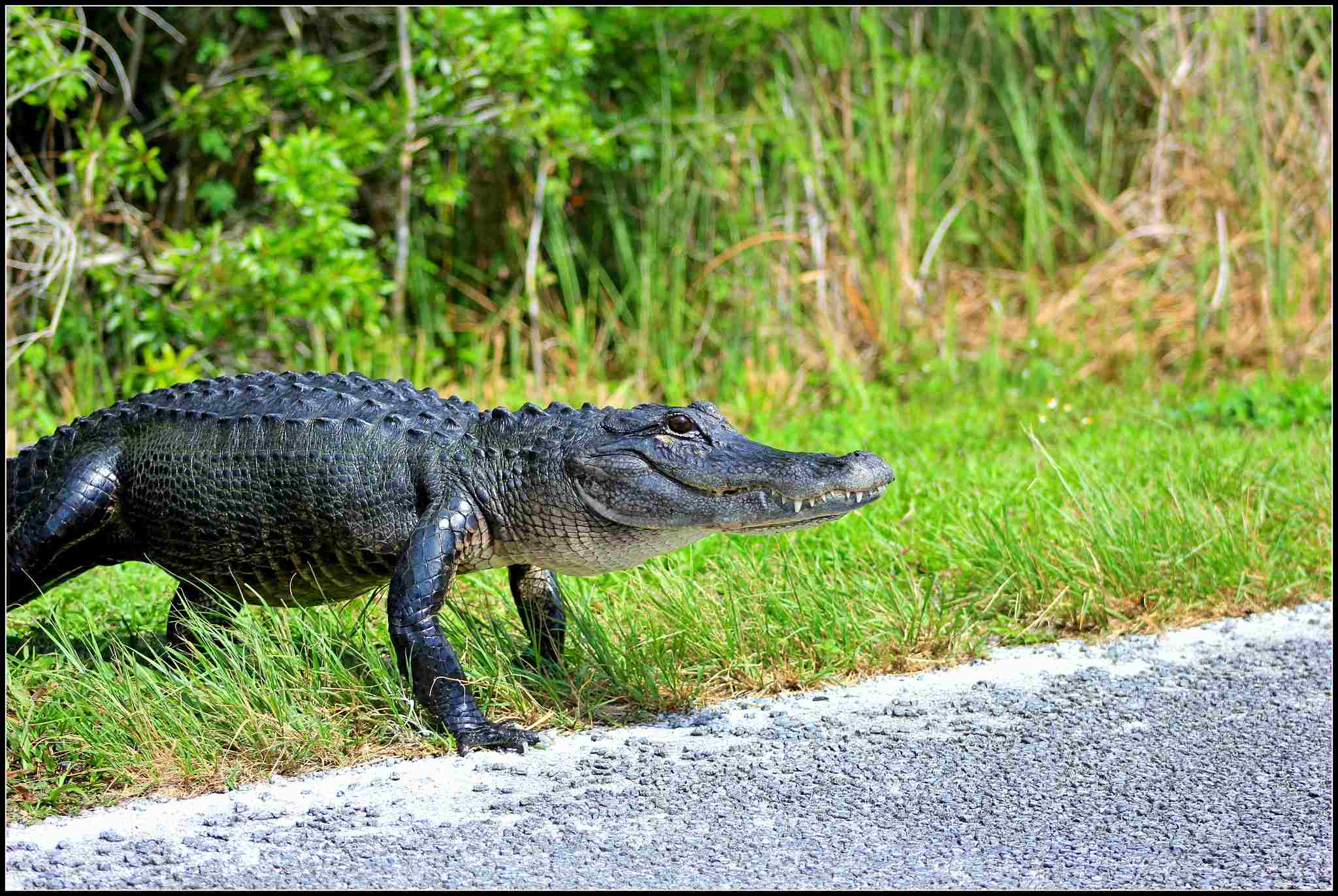
Alligator:
More adaptable to living in close proximity to human settlements
Crocodile:
Can inhabit areas near human populations but may exhibit more aggressive behavior
Comparison:
Alligators are generally more tolerant of human presence compared to some crocodile species.
Ecological Implications:
Human-wildlife conflicts may vary depending on the species, impacting conservation efforts, and necessitating management strategies in populated areas.
24. Behavior Toward Humans:
Alligator:
Generally less aggressive towards humans unless provoked
Crocodile:
Some species can be more aggressive, especially if they perceive humans as a threat
Comparison:
Crocodiles, in certain situations, may exhibit more aggressive behavior towards humans compared to alligators.
Ecological Implications:
Understanding their behavior toward humans is crucial for conservation efforts, ensuring coexistence, and minimizing conflicts.
25. Alligator Vs Crocodile, Which is More Dangerous:
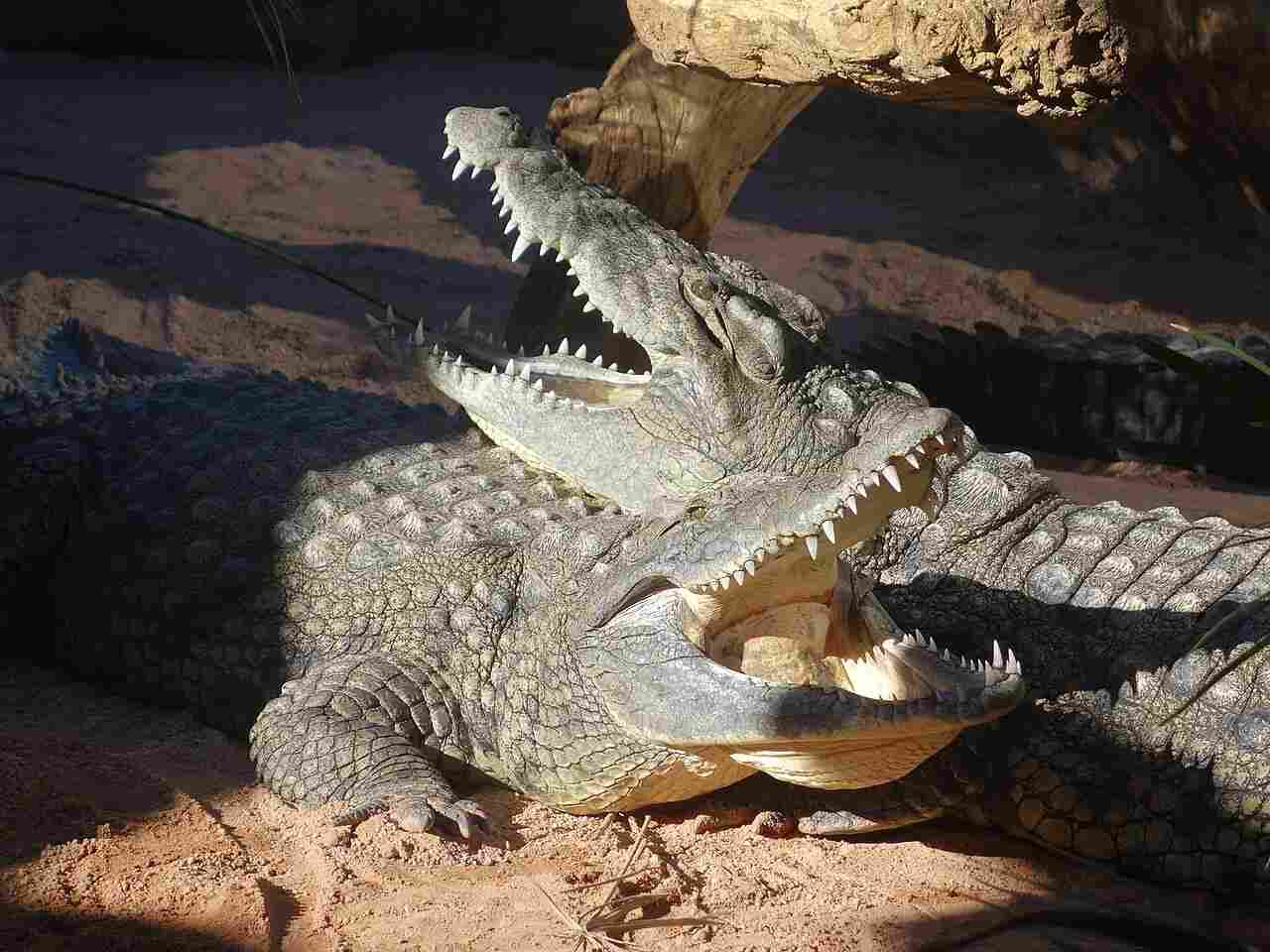
Alligator:
Generally poses less of a threat to humans
Crocodile:
Some species can be more dangerous due to their size, aggression, and habitat overlap with humans
Comparison:
Crocodiles, in certain circumstances, may be considered more dangerous to humans than alligators because of their higher aggressiveness, as well as their superiority in size, weight, and bite force.
Ecological Implications:
Managing interactions between humans and these reptiles is essential for both human safety and the conservation of these species.
26. Associated Precautions:
Alligator:
Caution is advised, but incidents are generally less frequent
Crocodile:
Heightened precautions are necessary in areas with aggressive crocodile species
Comparison:
Precautions around crocodiles may need to be more stringent compared to those around alligators.
Ecological Implications:
Implementing effective safety measures helps maintain a balance between human activities and the conservation of these species and their habitats.
27. Conservation Status:
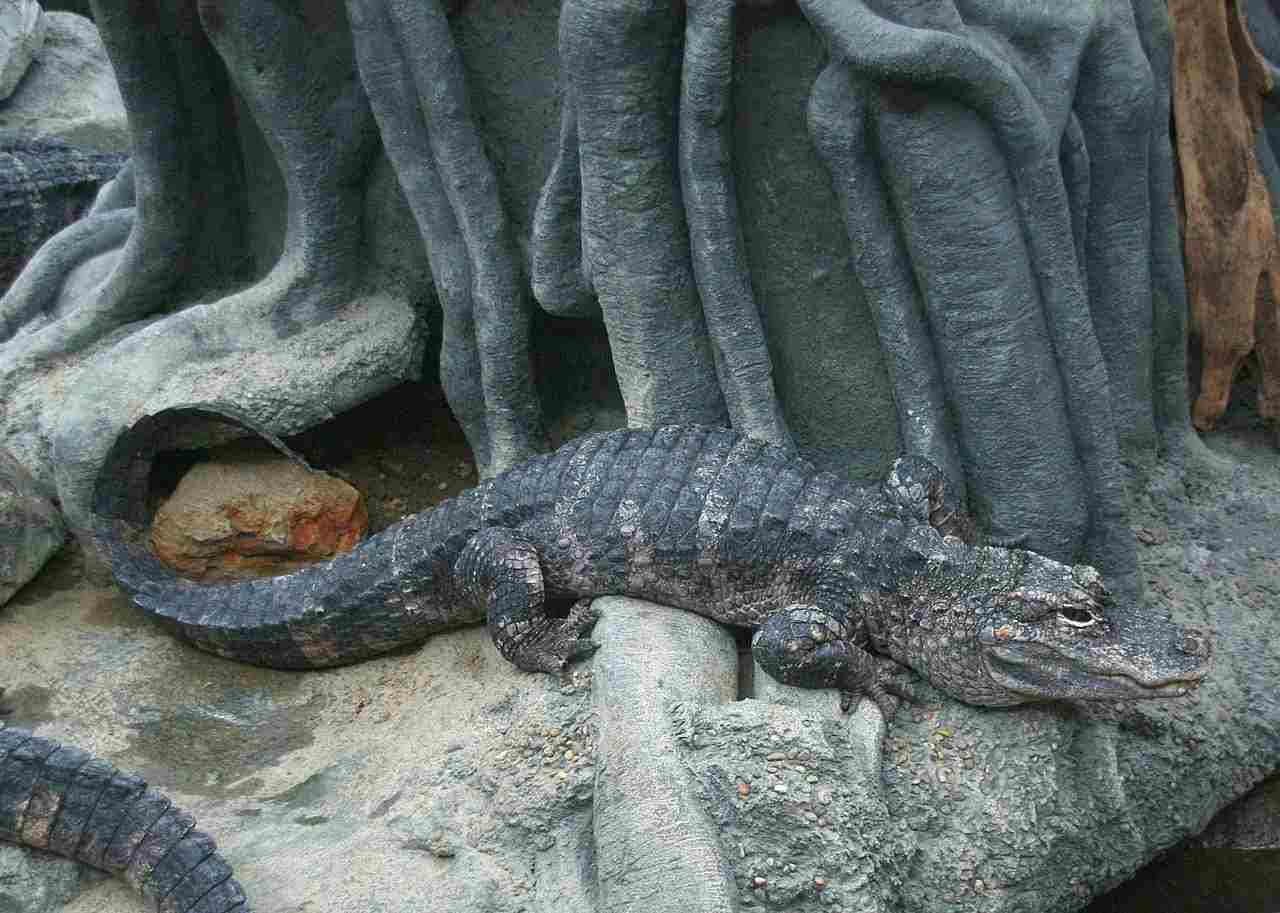
Alligator:
American alligator (A. mississippiensis) is listed as “Least Concern” on the IUCN Red List
Chinese alligator (A. sinensis) is listed as “Critically Endangered”
Crocodile:
Conservation status varies by species; for example, Saltwater crocodile (C. porosus) is of “Least Concern,” while Philippine crocodile (C. mindorensis) is “Critically Endangered”
Comparison:
Conservation status varies among different alligator and crocodile species.
Ecological Implications:
Conservation efforts are essential to ensure the survival of both alligator and crocodile species, considering their roles in maintaining ecosystem balance.
Summary of Comparison
Taxonomy:
Alligator: Family Alligatoridae; Genus Alligator; Species A. mississippiensis, A. sinensis
Crocodile: Family Crocodylidae; Subfamilies Crocodylinae, Alligatorinae, Gavialidae; Various Genera and Species
Appearance:
Alligator: Broad, U-shaped snout; Dark coloration; Robust and rounded appearance
Crocodile: Narrow, V-shaped snout; Lighter coloration; Leaner and more elongated body
Skin:
Alligator: Smoother texture; Osteoderms embedded in the skin
Crocodile: Rough texture; Pronounced osteoderms, giving a bumpy appearance
Snout:
Alligator: Broad, rounded snout
Crocodile: Narrow, pointed snout
Size:
Alligator: Generally smaller; Up to 15 feet
Crocodile: Larger on average; Some species exceed 20 feet
Weight:
Alligator: Adults 200 to 1,000 pounds
Crocodile: Larger species over 2,000 pounds
Bite Force (PSI):
Alligator: 2,000 to 3,000 PSI
Crocodile: Varies by species; Saltwater crocodile around 3,700 PSI
Teeth:
Alligator: Straight and even
Crocodile: Visible fourth tooth when the mouth is closed
Offensive Advantages:
Alligator: Powerful bite, strong tail
Crocodile: Higher bite force, agility, and speed
Defensive Advantages:
Alligator: Stout build, powerful tail, retreats to water
Crocodile: Agility, speed, territorial behavior
Speed:
Alligator: 10-20 mph
Crocodile: 20-30 mph
Agility:
Alligator: Less agile on land
Crocodile: More agile on land and in water
Senses:
Alligator: Well-developed hearing, eyesight, and sense of smell
Crocodile: Sensitive to water vibrations, excellent night vision, and sense of smell
Overall Physical Capacity:
Alligator: Strong jaw muscles, ambush hunter
Crocodile: Versatile physical abilities, effective in various hunting strategies
Habitat Preference(s):
Alligator: Freshwater habitats in the Americas
Crocodile: Broader distribution, various aquatic environments globally
Tracks:
Alligator: Claw marks and webbed imprints
Crocodile: Claw marks with distinct, non-webbed imprints
Lifespan:
Alligator: Up to 50-70 years
Crocodile: Varies by species; Some can reach 70-100 years
Mode of Feeding:
Alligator: Ambush predator
Crocodile: Diverse feeding strategies including ambush, stalking, and cooperative hunting
Intelligence:
Alligator: Considered less intelligent
Crocodile: Generally recognized for higher cognitive abilities
Social Behavior:
Alligator: Generally solitary
Crocodile: Can exhibit more social behaviors, including group nesting
Reproduction:
Alligator: Mound nests, temperature-dependent sex determination
Crocodile: Various nesting methods, parental care, temperature-dependent sex determination
Parental Behavior:
Alligator: Females guard the nest, no direct care after hatching
Crocodile: Some species exhibit parental care, protecting nests and assisting hatchlings
Proximity to Human-Inhabited Areas:
Alligator: More adaptable to living near humans
Crocodile: Can inhabit areas near humans but may exhibit more aggressive behavior
Behavior Toward Humans:
Alligator: Generally less aggressive unless provoked
Crocodile: Some species can be more aggressive, especially if humans are perceived as a threat
Danger Level:
Alligator: Generally poses less threat to humans
Crocodile: Some species can be more dangerous due to size, aggression, and habitat overlap
Precautions:
Alligator: Caution advised, incidents less frequent
Crocodile: Heightened precautions necessary in areas with aggressive species
Conservation Status:
Alligator: American alligator “Least Concern”; Chinese alligator “Critically Endangered”
Crocodile: Varies by species; Some are “Least Concern,” while others are “Critically Endangered”
Conclusion (Differences and Similarities):
Both belong to Crocodylia; exhibit temperature-dependent sex determination; possess powerful bites.
Differences include taxonomy, appearance, size, weight, behavior, and conservation status.
Conclusion: Alligator Vs Crocodile Differences and Similarities
I). Similarities:
Both belong to the order Crocodylia
Exhibit temperature-dependent sex determination in their reproductive strategies
Possess a powerful bite and are apex predators in their ecosystems
II). Differences:
Taxonomy: Alligators belong to the family Alligatoridae, while crocodiles belong to the family Crocodylidae.
Appearance: Alligators have a broad, U-shaped snout, while crocodiles have a narrow, V-shaped snout.
Skin: Alligator skin is smoother, while crocodile skin is rougher with pronounced osteoderms.
Parental Behavior: Crocodiles are more likely to exhibit parental care compared to alligators.
Conservation Status: Conservation status varies among different alligator and crocodile species.
